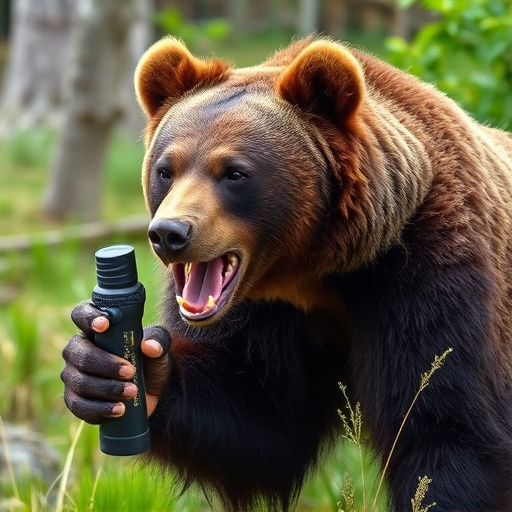Understanding where bear spray is prohibited (Where Is Bear Spray Prohibited) is vital for safe outdoor adventures. National parks, wilderness zones, and communities with frequent bear encounters often restrict or ban bear spray to preserve ecosystems, protect wildlife, and ensure human safety. Ignoring these restrictions can result in fines. Knowing these areas ensures responsible exploration and enhances safety measures when encountering bears, promoting compliance and respect for natural habitats.
In the great outdoors, encountering bears is a potential reality, and knowing how to deter them is crucial. This article explores bear spray as a key tool for personal safety in bear country. We’ll delve into its effectiveness, ranging from 20-35 feet, and uncover what makes it a viable option against aggressive bears. Furthermore, we’ll navigate legal considerations regarding bear spray use and provide best practices to ensure maximum protection when hiking or camping in areas where bear encounters are common, including understanding where this deterrent may be prohibited.
- Understanding Bear Spray Effectiveness: What It Can and Can't Do
- Legal Considerations: Where Is Bear Spray Use Prohibited?
- Factors Affecting Bear Spray Range: Distance and Conditions
- Best Practices for Using Bear Spray: Maximizing Its Effective Range
Understanding Bear Spray Effectiveness: What It Can and Can't Do
Legal Considerations: Where Is Bear Spray Use Prohibited?
Bear spray, while an effective deterrent against bears, is subject to legal restrictions in certain areas. Its use is prohibited in some regions due to environmental and safety concerns. National parks and wildlife reserves often have strict rules regarding bear spray, as they aim to preserve natural habitats and minimize human interference. For instance, many protected areas do not allow the carrying of bear spray within their boundaries, emphasizing non-lethal methods of bear deterrence like noise makers and pepper spray designed for personal defense.
Additionally, some communities with frequent bear encounters have local ordinances limiting or banning bear spray use. These regulations often consider the potential impact on wildlife populations and the safety of both residents and visitors. It’s crucial for individuals planning to carry bear spray to familiarize themselves with the local laws, as using it in prohibited areas can result in fines and penalties.
Factors Affecting Bear Spray Range: Distance and Conditions
Best Practices for Using Bear Spray: Maximizing Its Effective Range
Using bear spray effectively requires understanding its range and applying best practices. To maximize the spray’s impact, users should aim for the eyes and face of a bear. This area is sensitive, and hitting it can deter an attacking bear. Keep in mind that bear spray is most effective at close range; ideally, within 20-30 feet (6-10 meters). Spraying from a greater distance may not provide enough irritant to stop an aggressive bear.
It’s crucial to remember that bear spray isn’t a guarantee of safety and should be used as a last resort. There are certain areas where carrying or using bear spray is prohibited due to environmental or cultural reasons, so always check local regulations before venturing into bear country. Proper knowledge and awareness of these rules will ensure you’re prepared with the right tools while respecting natural habitats and wildlife.
Bear spray is an important tool for outdoor enthusiasts navigating bear country, but understanding its limitations and proper usage is key. While it can effectively deter bears within a certain range, legal restrictions on its use vary across regions. Factors like distance and weather conditions impact the spray’s reach, making it crucial to follow best practices for maximizing its effectiveness. By adhering to guidelines and staying informed about local prohibitions, individuals can ensure their safety while respecting wildlife habitats.
